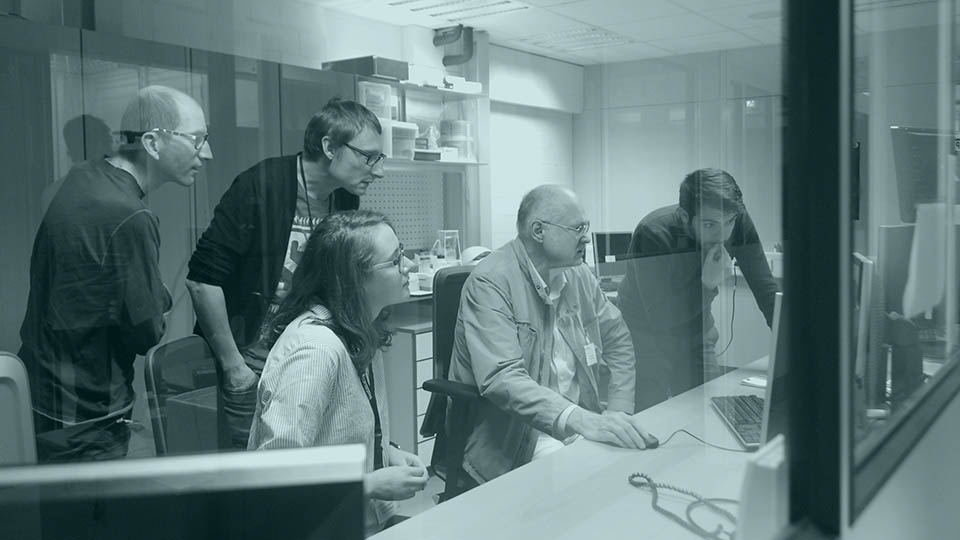
The superpower of X-ray vision found in our favourite comics allows superheroes to see through solid objects such as walls, and be able to look at the shapes and structures that lurk behind them. Surely many a scientist would also love to possess the power of X-ray vision to see the shapes and structures of molecules within their test tubes in the lab, and to watch how they change under varying experimental conditions?
BIOSAXS, EMBL’s latest spinout, cannot help you see through walls, but by harnessing intense X-rays for small angle X-ray scattering (SAXS) experiments, it can help scientists glean structural information about biological macromolecules and enable researchers to take a peek at what is going on in the test-tube.
Making the invisible visible
SAXS is used to investigate the size and shape of macromolecules such as proteins, RNA, DNA and protein complexes in solution. In contrast to other structural biology technologies such as crystallography or cryo-EM, SAXS structural information is obtained directly from native solutions without need to crystallize or flash-freeze. This allows, in particular, rapid studies under a variety of experimental conditions analyzing e.g. the effects of buffers or interaction with small ligands on the molecules of interest.
The principle of SAXS relies on illuminating the sample with an X-ray beam, which is scattered and recorded by a detector (see an animation of how the technology works here). Special software applications analyze the data and create models of the shape of the molecules. The crucial factor for the quality of the output is the intensity of the X-ray beam. The third generation storage ring PETRA III on the DESY (Deutsches Elektronen Synchrotron) campus in Hamburg Germany is the most intense synchrotron in the world and home to the BioSAXS beamline operated by EMBL. It is also the place where the roots of BIOSAXS were laid over 20 years ago, when Dmitri Svergun joined EMBL.
Step by step
Since establishing his own group in 2003 Dmitri has used his extensive expertise to further improve SAXS methodology in terms of instrumentation, data collection, analysis and interpretation. The group has gained a pioneer status in the community for developing data analysis and modelling methods for SAXS. ATSAS, a user friendly software solution for processing SAXS data is the most renowned software suite in the field today and is continually being updated and refined. Dimitri’s group has also developed and operates EMBL’s SAXS beamline P12 on PETRA III, dedicated to biological macromolecules. With the opening of the new beamline in 2012, the group reached out and started offering SAXS as a service to academic partners from all over the world. Since then, they have faced a rapid increase in collaborations and a growing interest from industry. For example a large manufacturer of analytical instrumentation, implemented ATSAS on their home source SAXS device, and a constantly growing number of pharmaceutical companies utilized the bioSAXS services through the EMBL enterprise management (EMBLEM) access. To better address the increasing demands and needs of the industrial partners, Dmitri and colleagues decided to take their activity to the next level.
Level Up
In late 2015 the company BIOSAXS opened its doors on the DESY campus in Hamburg. While all the services offered by EMBL for academic users remain fully intact, the company focuses on applying SAXS for medical and materials sciences approaches. The services can generate data on a wide range of aspects such as overall particle shape, quaternary structure, conformational changes, oligomeric state, effect of ligands and much more.
Each project is individually planned together with the customer and carried out by the expert team at the SAXS beamline to ensure high-quality results. Subsequent data analysis and model building is conducted with ATSAS utilizing the most appropriate interpretation techniques to answer the questions on the system. Within a few weeks of receiving the samples, the results are sent to the clients in the form of a comprehensive report and structural models. For those customers who are not satisfied with just seeing the digital visualization of the results the experienced BIOSAXS team provides customized training on all aspects of SAXS experiments.
For further information visit www.biosaxs.com or meet them at PSDI 2016.
